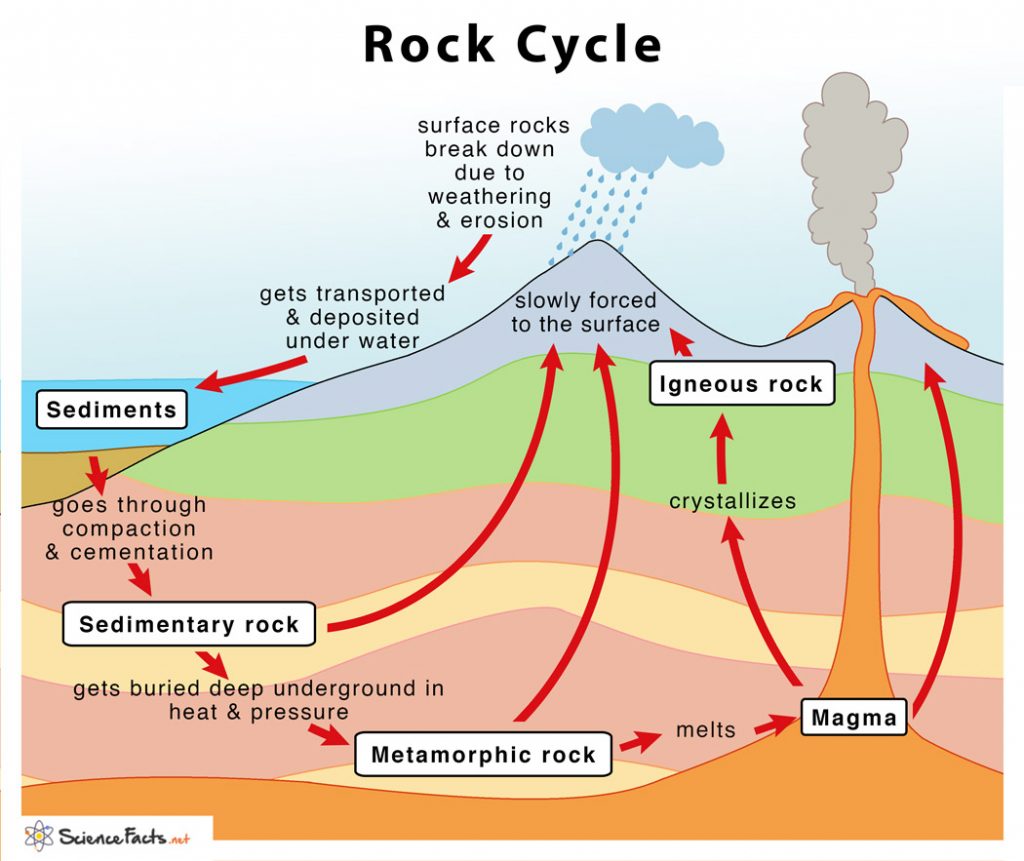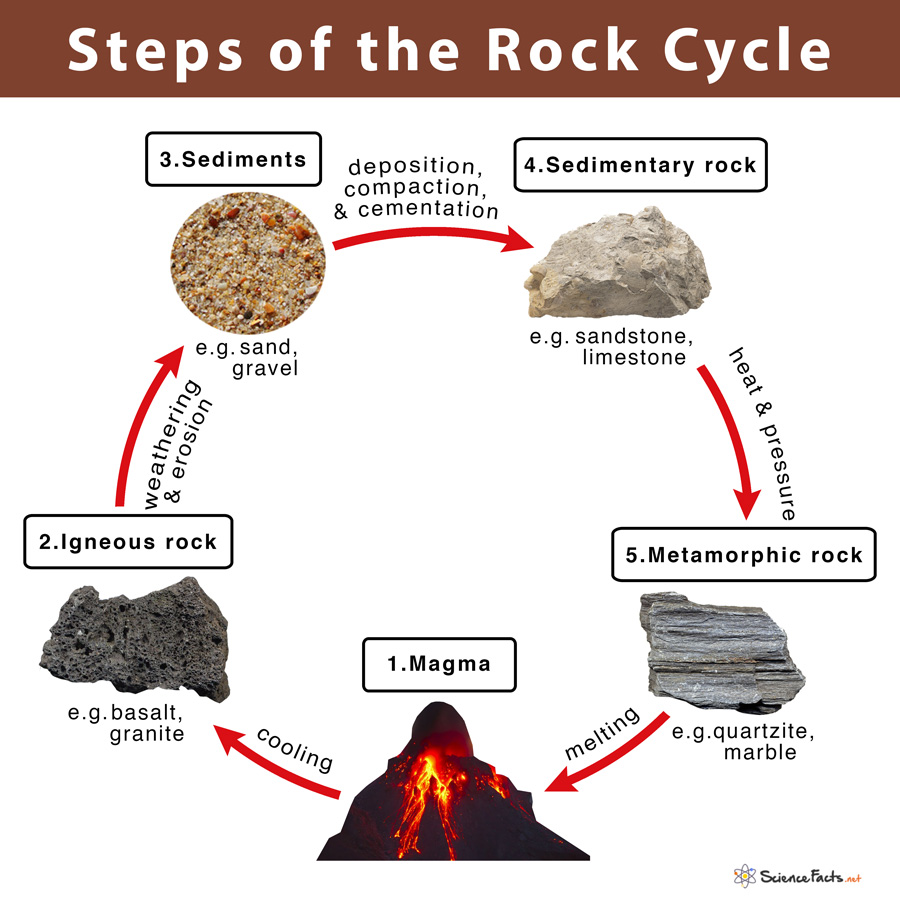What Causes the Rock Cycle
Steps of the Rock Cycle: How does it Work
Why is the Rock Cycle Important
Plate tectonic activity Weathering Erosional processes
Magma, the molten rock present deep inside the earth, solidifies due to cooling and crystallizes to form a type of rock called igneous rocks. Cooling of igneous rocks can occur slowly beneath the surface of the earth or rapidly at its surface. 2) Formation of Sedimentary Rock – Weathering, Erosion, Sedimentation, and Compaction Due to weathering and erosional activities, the igneous rocks are broken down to form sediments in the form of gravel, sand, silt, and clay, which gets mixed and pressed together for extended periods to form sedimentary rocks. 3) Formation of Metamorphic Rocks – Metamorphism Over a very long period of time, sedimentary and igneous rocks end up being buried deep underground the soil, usually because of the movement of tectonic plates. Deep below the surface, these rocks are exposed to high heat and pressure, which change them into a different type of rock called metamorphic rock. 4) Weathering Igneous, sedimentary, and metamorphic rocks present on the surface of the earth are constantly being broken down by wind and water over a long time. 5) Transportation Carrying away of broken rocks by rain, streams, rivers, and oceans to a distant place from their origin. 6) Deposition During the carriage of rocks by rivers, the rock particles (mixed with soil) sink and become a layer of sediment. Often the sediments build up and form small accumulations, which over time and pressure turn into sedimentary rock. Melting of underground metamorphic rock forms magma, which on crystallization forms igneous rock, thus continuing the cycle.

